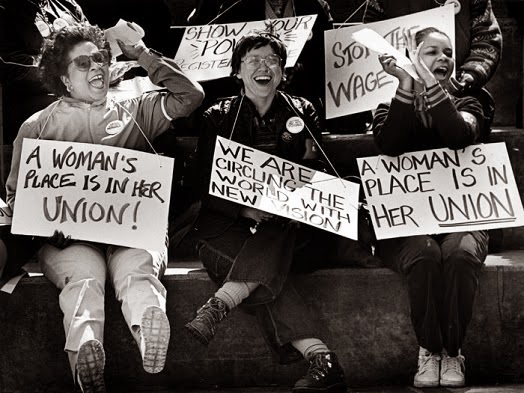"I always feel the movement is a sort of mosaic. Each of us puts in one little stone, and then you get a great mosaic at the end." -Alice Paul
After watching the movie "Iron Jawed Angels" and taking a closer look at building a movement what are your thoughts? What can we learn from the suffrage movement that we can bring to our labor union movement? Are you thinking of ways that you can contribute? Are you inspired? Are you ready to get involved? Are you fired up?!
AFSCME Local President Donnene Williams said of HUCTW,
It's easy to get involved here. If you want to do more, you can. If you want to do a little, you can. If you want to do a lot over a short time, you can. If you want to do a little over a long time, you can. We have something for everyone.
From Susan C.Eaton Interview with Donnene Williams, January 3, 1992
Take a look at AFL-CIO Secretary-Treasurer Liz Shuler speaking at a recent event in Oregon.
"This is the challenge of our time!" Liz Shuler
We need to build a movement, get more people to participate, we need a real working class movement!" -AFL-CIO President Richard Trumka
"The Teamsters are well on their way to transforming the labor movement into a social force that can improve the lives of all working people. To reach our goal, we must engage people in our struggle for social and economic justice." -IBT President James P. Hoffa
"We have the opportunity to build a movement of millions." -SEIU President Mary Kay Henry
We learned a lot about what it takes to build a movement from our sisters in the suffrage movement. Now we need to pass it on! WHAT YOU DO MATTERS!
Here's another video I think you'll enjoy.
March is Women's History Month why not host a movie night by watching "Iron Jawed Angels" with your union sisters and talk about building a movement?
Do you have an hour to spare? Would you like to make a contribution? How about a pledge?

